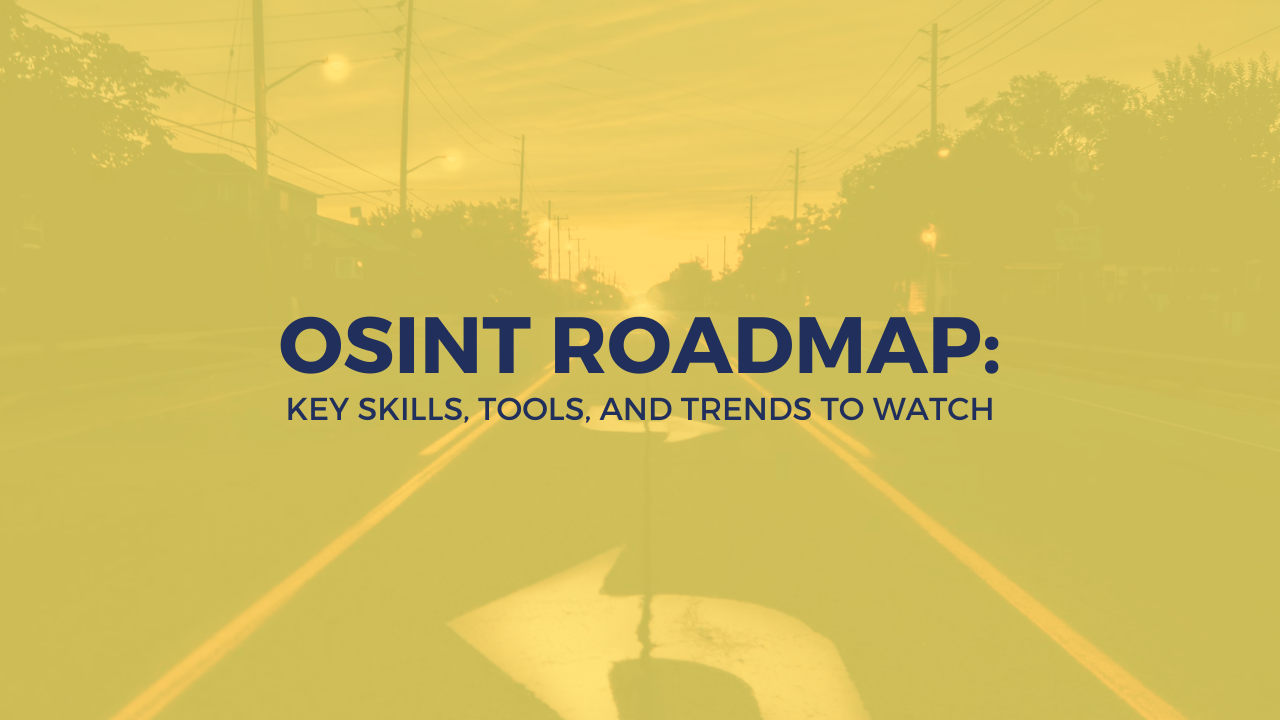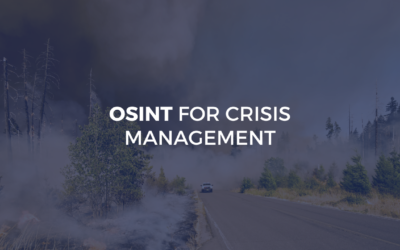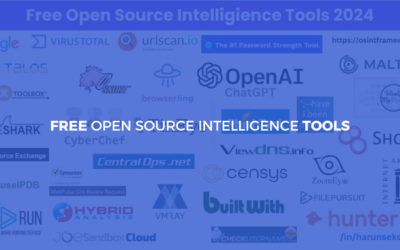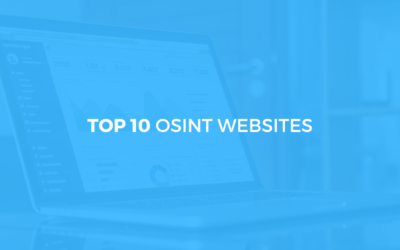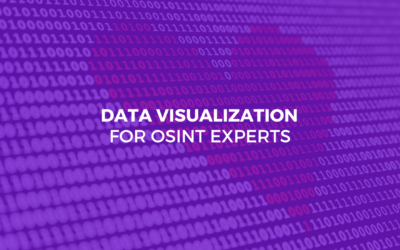As Open Source Intelligence (OSINT) continues to evolve, 2025 brings a renewed focus on emerging technologies, refined methodologies, and a growing demand for skilled OSINT professionals. This guide will walk you through an OSINT roadmap tailored for 2025, outlining essential skills, key tools, and current trends that will shape the field. Whether you’re new to OSINT or a seasoned professional, following this roadmap will help you stay competitive and relevant in the fast-paced world of Open Source Intelligence.
1. Understanding the 2025 OSINT Landscape
OSINT has gained significant traction across sectors such as cybersecurity, journalism, law enforcement, and corporate intelligence. Open Source Intelligence leverages publicly accessible data to gather actionable insights. As data volume and types grow, so do the challenges and opportunities in using OSINT effectively.
For 2025, OSINT will increasingly rely on AI, machine learning, and enhanced automation, making it essential to adapt to new tools and methods that improve data accuracy, efficiency, and ethical standards. Here’s a roadmap to guide you through this transformative year.
2. Building Foundational Skills
A strong OSINT skillset involves more than knowing a few tools. Here are foundational skills to prioritize in 2025:
A. Data Analysis and Critical Thinking
- OSINT relies heavily on analyzing large datasets. Being able to interpret data accurately, spot patterns, and make sense of information within a particular context is essential.
- 2025 Focus: Learn to use automated data visualization tools, as they can speed up the identification of trends within data.
B. Technical Skills
- Coding and Scripting: Python and R are particularly useful for data manipulation, scraping, and analysis. Basic coding can automate repetitive tasks and improve the scope of your research.
- 2025 Focus: Look into specific libraries like BeautifulSoup for web scraping and Pandas for data handling.
- Network Knowledge: As OSINT practitioners increasingly investigate digital footprints, understanding IP addresses, DNS records, and other network data becomes crucial.
C. Legal and Ethical Awareness
- OSINT practitioners must be aware of legal boundaries and ethical considerations to avoid violating privacy or data laws.
- 2025 Focus: Keep updated with data protection regulations like the GDPR and similar laws globally, as they impact OSINT practices.
D. Social Engineering Awareness
- Understanding social engineering tactics helps OSINT professionals anticipate and identify deceptive or biased information.
- 2025 Focus: Train yourself to recognize signs of misinformation and propaganda, which can skew OSINT findings if left unchecked.
3. Essential Tools for 2025 OSINT Professionals
2025 brings a plethora of new and improved OSINT tools. This year’s focus is on increasing accuracy, improving efficiency, and safeguarding data. Here are key tools to consider integrating into your OSINT toolkit:
A. Data Collection Tools
- Maltego: A powerful tool for mapping relationships among people, places, and entities.
- Spiderfoot: An automated reconnaissance tool that aggregates data from multiple sources, saving you time.
- 2025 Focus: Seek tools with API integrations to streamline data retrieval from social media, financial, and government databases.
B. Data Processing and Analysis Tools
- Jupyter Notebooks: Useful for organizing data analysis workflows, especially when combined with Python.
- Aircrack-ng: A tool for network traffic analysis, critical for identifying Wi-Fi networks and related devices.
- 2025 Focus: Learn data visualization tools like Tableau to improve your presentation of findings.
C. AI-Powered and Automation Tools
- AI Data Enrichment: Tools like OpenAI’s GPT models can assist in interpreting text data, identifying patterns, and summarizing information.
- 2025 Focus: Experiment with AI-driven tools for OSINT tasks, such as text summarization, sentiment analysis, and automated report generation. These can significantly speed up your workflow.
D. Ethical and Privacy Tools
- Amass: Useful for digital footprinting and domain reconnaissance while respecting privacy.
- 2025 Focus: Prioritize tools that support responsible OSINT practices. For example, tools that avoid scraping restricted content or require explicit permissions ensure compliance with data privacy laws.
4. Key Trends Shaping OSINT in 2025
Understanding where OSINT is heading can make your efforts more strategic and focused. Here are the top trends shaping the OSINT field in 2025:
A. AI and Machine Learning Integration
- AI is transforming OSINT by automating data collection, analysis, and even interpretation.
- Trend Insight: AI can analyze massive datasets in real-time, extracting relevant information quickly and more accurately than manual methods.
B. Focus on Dark Web Intelligence
- As cyber threats increase, monitoring the dark web for data leaks, insider threats, and other security risks is crucial for OSINT practitioners.
- Trend Insight: Use dark web-specific tools, such as DarkOwl or Echosec Beacon, to conduct thorough searches without compromising your security.
C. Real-Time OSINT
- Real-time OSINT is increasingly valuable for responding to breaking news, natural disasters, or unfolding security threats.
- Trend Insight: Social media platforms, live feeds, and government alerts can provide immediate intelligence, making real-time OSINT tools a must-have for those in security and journalism.
D. Increased Demand for OSINT in Compliance and Corporate Security
- Corporations are leveraging OSINT to monitor market conditions, conduct due diligence, and ensure compliance.
- Trend Insight: This corporate focus brings a need for specialized OSINT skills, such as identifying potential risks related to mergers, acquisitions, and brand reputation.
E. Enhanced OSINT for Misinformation Detection
- As fake news and misinformation continue to spread, OSINT professionals play a critical role in identifying and mitigating false information.
- Trend Insight: Specialized tools like TruthNest and Hoaxy can help track the spread of misinformation and assess its credibility.
5. Building a Personalized OSINT Roadmap
Creating a custom OSINT roadmap can help you meet your unique goals, whether they’re in cybersecurity, journalism, or business intelligence. Here are some steps to build your own roadmap:
A. Define Your OSINT Goals
- Establishing clear objectives is key. Are you focused on cybersecurity, investigative journalism, or compliance? Knowing your goals will guide your tool and skill selection.
- Tip: Break down your goals into smaller, actionable steps. For instance, if cybersecurity is your focus, start with mastering data collection and threat intelligence tools.
B. Focus on Relevant Tools and Techniques
- Once you have defined your objectives, tailor your toolkit to match. Journalists may prioritize social media OSINT tools, while cybersecurity specialists may need tools for digital footprinting.
- 2025 Focus: Identify tools with flexible APIs, allowing you to build custom integrations and automate parts of your process.
C. Prioritize Continuous Learning
- OSINT is a rapidly evolving field. Regularly update your skills through online courses, certifications, and community forums.
- Suggested Resources: Consider platforms like Coursera, Udemy, and OSINT Framework for learning and networking.
D. Stay Informed of Industry Developments
- The OSINT field is dynamic, with new laws, tools, and techniques emerging frequently. Staying updated will ensure your methods and tools remain relevant.
- 2025 Focus: Subscribe to OSINT newsletters, attend webinars, and join online OSINT communities like Bellingcat or OSINTCurio.us.
6. Growing Your OSINT Career in 2025
To grow as an OSINT professional, career planning should be an integral part of your roadmap. Here’s how to approach career advancement in this field:
A. Build an Online Portfolio
- Showcase your OSINT projects on platforms like GitHub or Medium, especially if you’ve worked on unique investigations or created custom tools.
- 2025 Tip: Creating detailed case studies can highlight your skills to potential employers or clients.
B. Network within the OSINT Community
- Joining OSINT communities can lead to collaborations, job opportunities, and knowledge exchange.
- Top Communities: Consider forums like the OSINT Curious Project or industry-specific LinkedIn groups.
C. Pursue Advanced Certifications
- Certifications like SANS SEC487 (Open-Source Intelligence) and other cybersecurity-focused certifications can validate your expertise.
- 2025 Tip: Explore certifications in data privacy, which is increasingly relevant as OSINT faces stricter regulations.
7. Preparing for the Future of OSINT
As we look ahead, the future of OSINT will likely bring both opportunities and challenges. The next few years will see more sophisticated AI-driven OSINT solutions, stricter privacy laws, and a continued push for real-time intelligence capabilities. Here’s how you can stay ready:
- Adapt to Emerging AI Trends: As AI-powered OSINT becomes the standard, familiarity with AI tools will be crucial.
- Anticipate Regulatory Changes: Be prepared for new data protection regulations that may limit certain OSINT techniques.
- Focus on Ethics: Maintain ethical standards to ensure responsible data collection and avoid legal issues.
FAQ
1. What is OSINT, and why is it important?
OSINT, or Open Source Intelligence, involves collecting and analyzing publicly accessible data to extract actionable insights. It is crucial across sectors like cybersecurity, journalism, law enforcement, and corporate intelligence, providing a valuable resource for informed decision-making.
2. What are the career paths for OSINT professionals?
OSINT professionals can work in cybersecurity, law enforcement, journalism, corporate intelligence, and compliance. Building a portfolio, obtaining certifications, and networking within OSINT communities are effective ways to advance in this field.
3. How can OSINT professionals stay updated on industry trends?
Staying informed through newsletters, webinars, online OSINT communities, and continuously updating skills through courses on platforms like Coursera and Udemy helps professionals stay relevant in this fast-evolving field.
Read more from our OSINT Blog:
- How to Hide Yourself from OSINT?
- OSINT Roadmap for 2025: Key Skills, Tools, and Trends to Watch.
- Free OSINT Tools.
- How to Make Money As OSINT Professional in the Age of AI?
- How to Start a Successful OSINT Consulting Business?
- OSINT for Content Creators and Bloggers.
- Data Visualization for OSINT Experts.
- OSINT for Investigative Journalism.
- How to Make Money with OSINT: Start Your Journey as an OSINT Expert.
- What you need to learn to become an OSINT expert?

